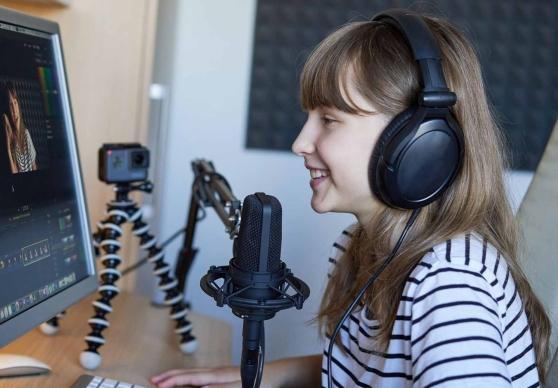
Podcasting with students can be a fun and motivating project.
Creating podcasts with your middle and high school students isn’t just a trendy project, it’s a task that checks many important boxes: using real-world skills, applying content knowledge, integrating technology, learning and practicing English for English language learners, incorporating student voice, practicing all components of English language arts and meeting the Next Generation Learning Standards. People often listen to podcasts to learn something, so they’re a perfect fit for the classroom. Podcasts are also fun and motivating for students, especially if their work is shared with the school community or beyond.
Embarking on a podcast project takes some advance work and planning. Here’s advice for each step:
Pre-planning
Listen to several examples of podcasts. As you listen, develop a set of criteria with your class — what podcasts work best and why — that you can later use to formulate project guidelines, create a graphic organizer and make a rubric for evaluation.
When picking a topic, think about what your students know best, whether it’s a unit recently studied or a subject of personal interest. There are no visuals, so steer clear of demonstrations or anything else that might be hard to follow just by listening.
Some ideas for student podcast projects:
- Interview of a notable person. One student role-plays the notable person and the other students are the journalists.
- A recap of something recently learned that could be used for class review.
- Student-written creative storytelling.
- Advice from older students to younger ones on a subject, an annual project or school life.
- A newscast as if students were reporting live from a historic location or event.
Creating podcasts is best as a group project; division of labor will be needed. Students should generate topic ideas and submit them for teacher approval and feedback and then prepare written scripts and assign roles before any recording takes place. Barring unusual circumstances, all students should have speaking parts. You should provide classroom time for rehearsal before recording.
Recording and editing
Choose software that allows students to both record and edit and that works with the technology you have available. It’s hard to beat GarageBand if you have iPads. Audacity is a free audio recording and editing program for either Macs or PCs. If you want to use a web-based platform, PodBean or Anchor are popular and free to use. There are many tutorials for these apps on YouTube, though a short in-class training lesson for students on how to use the software of your choice might be appropriate.
It helps if you have headphones and microphones handy to lessen background noise, but it’s not absolutely necessary. Encourage students to focus on content and the quality of their speaking voice while recording.
When editing, students should keep the podcasts concise: Attention spans are short, and a few minutes of audio can cover lots of ground. Most of these apps have drag-and-drop interfaces that make editing easier, but it’s best to keep things simple and be forgiving of student learning curves.
Listening and sharing
Listen to the podcasts as a large group when they are complete. You might consider inviting others to your classroom for a listening premiere or sharing the podcast with a wider audience if appropriate, such as with parents or on your school’s website. If you use PodBean or Anchor to create the podcasts, they can be housed there as well, or you can post them to Apple Podcasts or SoundCloud for free.
Sandy Scragg is an instructional technology specialist with more than 15 years of experience in New York City public schools.